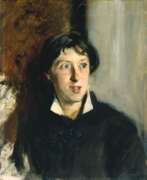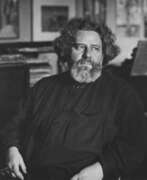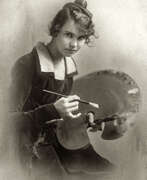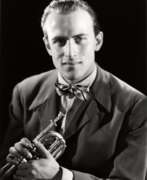Interpreters 20th century


Hans Henning Otto Harry Baron von Voigt, best known by his nickname Alastair, was a German artist, composer, dancer, mime, poet, singer and translator. He is best known as an illustrator.
His drawings, which are often decadent in spirit and have the look of Art Nouveau, are influenced somewhat by the drawings of the English artist Aubrey Beardsley.
His drawings were in black and white ink, sometimes with one colour added. Alastair's illustrations show a strong influence from the Decadent movement in art and poetry that had begun decades earlier, with the "perverse and sinister" a recurring theme. Intricate decorative elements and fine detail are apparent in his works.


Dominique Aury, real name Anne Desclos, was a French writer, talented journalist, translator and editor.
Dominique Aury held the post of secretary at the publishing house Gallimard in Paris for many years from 1946. She was a jury member for a number of literary prizes, she translated into French works by Thomas Brown, James Hogg, Evelyn Waugh, Arthur Köstler, Yukio Mishima. In her articles she highlighted the problems of translation, analysed the work of English poets and writers, demonstrating a deep understanding of the literary process.
The most famous episode in Ori's career is the erotic novel Histoire d'O, published in 1954 under the cryptonym Pauline Réage. The novel was a resounding and scandalous success and was prosecuted several times. For 40 years, however, Orie never acknowledged her authorship, only to declare it openly in a 1994 interview with The New Yorker, calling the book a love letter to Jean Poland - author of the preface to the first publication of Histoire d'O.
Dominique Orie's writing style was poignant and intellectual, with insightful observations on sexuality and human relationships. She skillfully used words and language to evoke emotion and provoke thought. Her works have had a significant influence on sexual literature and feminist thought.


Sabine Baring-Gould was a Victorian British clergyman, poet, writer and folklorist.
He traveled extensively in Europe, studied at Clare College, Cambridge, was ordained in the Church of England in 1864, and was appointed vicar at Horbury. Baring-Gould was a polyglot and knew six languages. Despite his ministry, he had a serious interest in supernatural phenomena and in 1865 published a book called The Book of Werewolves.
In addition to this, Baring-Gould was interested in a wide range of subjects. His work is diverse and covered theology, history, poetry, hymns, fiction, biography, travel, social commentary, and folklore. Baring-Gould collected the folk songs of old English singers, personally visiting them and recording the words and music. In 1889 he published a collection of Songs of the West in four parts, of which he was proud, and also wrote several patriotic hymns.
Baring-Gould was a very prolific writer: during his life he wrote many novels, published short stories in periodicals, the popular "Curious Myths of the Middle Ages," and others, his bibliography numbering some 1,250 works.


Ivan Osipovich Dudin (Russian: Иван Осипович Дудин) was a Russian and Soviet artist, painter, translator, and educator. He was born on January 19, 1867, in Moscow and passed away on April 4, 1924, in the same city. Dudin received his education at Moscow University and the Moscow School of Painting, Sculpture, and Architecture, where he was awarded the title of class artist in 1902.
Dudin is known for his landscapes, portraits, and genre scenes. His extensive travels influenced his works significantly. Since 1894, he regularly participated in exhibitions of the Moscow Society of Art Lovers and the Association of Traveling Art Exhibitions. Among his notable students were famous artists such as A.V. Kuprin, V.A. Favorsky, and V.I. Mukhina.
One of Dudin's significant works is "Blooming Garden" from 1902, which is exhibited in the State Tretyakov Gallery. His works can also be found in museums in Irkutsk, Kirov, and Krasnodar.
If you want to receive updates on new sales and auction events related to Ivan Osipovich Dudin, sign up for our updates. We will inform you only about new arrivals and events related to this artist.


Adolf Hoffmeister (1902-1973) was a Czech artist, writer, journalist, playwright, translator, and diplomat, renowned for his multifaceted contributions to culture and art. His early career saw him collaborate with significant figures in the art world, including Philippe Soupault and Jaroslav Ježek. In 1928, Hoffmeister made his mark with a solo exhibition in Paris and became involved in various literary and artistic publications, such as Lidové noviny and Literární noviny.
Hoffmeister's art often intersected with his political views. He set up the anti-fascist magazine Simplicus in the 1930s and was a member of the Mánes Association of Fine Arts, where he defended the anti-Nazi artwork of John Heartfield. His life was dramatically affected by World War II; fleeing Nazism, he was interned in Paris and a Moroccan concentration camp before reaching New York in 1941. After the war, he returned to Prague and engaged in diplomacy and academia but faced political ostracization following his pro-reform activities in 1968.
Hoffmeister's work in collage was notable, especially his illustrations for Jules Verne's "Around the World in Eighty Days." He was also known for his libretto for the children's opera "Brundibar" and translating James Joyce’s "Anna Livia Plurabelle." His pieces, such as "Demonstration" (1963) and "Greek village by Syrakus" (1960), are preserved in archives like the Ruth and Marvin Sackner Archive of Concrete and Visual Poetry, illustrating his unique approach to visual storytelling.
For collectors, auctioneers, and art and antiques experts, Hoffmeister's works represent a compelling blend of artistic innovation and historical context. His legacy continues to inspire, and keeping informed about exhibitions or sales of his work is essential for those interested in 20th-century European art and literature.


Vernon Lee, real name Violet Paget, was an English writer, translator, and author of numerous essays on art. She is best known for fantasy stories and works on aesthetic theory.
Vernon Lee wrote more than 30 books during her lifetime, including works of various genres: short stories, historical novels, mystical stories. Her art studies, written on a wide range of topics such as Shakespeare, Renaissance culture, etc., are also noted for their excellence. No less popular were her numerous travel notes on her journeys in Europe - Germany, France, Switzerland.


Bahman Mohassess was an Iranian painter, sculptor, translator, and theatre director. His oeuvre comprises paintings, sculptures and collages. Known as "the irreverent" artist, Mohasses is said to have destroyed many of his own works, and those that become available at auction are now highly sought after. Mohassess is the most prominent artist who was openly gay in Iran, which is still stigmatized. He was the subject of the Mitra Farahani film documentary, Fifi Howls from Happiness (2013).


Konrad Balder Schäuffelen is a German psychiatrist, artist, author of concrete and visual poetry, and translator.
Schäuffelen earned a PhD in medicine and worked as a psychiatrist at the Max Planck Institute for Psychiatry in Munich. After training as a psychotherapist and psychoanalyst, he worked in his own practice and as a writer and translator in Munich.
In the 1950s Schäuffelen turned to experimental and visual poetry; from the early 1960s he mainly produced language and book objects as well as audiovisual installations. In 1979 he was awarded the Schwabing Art Prize in the plastic/sculpture category.


Stephen Harold Spender was an English poet, novelist and essayist whose work concentrated on themes of social injustice and the class struggle. He was appointed Poet Laureate Consultant in Poetry by the United States Library of Congress in 1965.


John Ronald Reuel Tolkien was a British writer and poet, translator, philologist, and linguist.
Tolkien wrote many works in the genre of magical fiction. He became world famous for his fantasy books The Hobbit (1937) and The Lord of the Rings (1954-55).
"The Hobbit" was published in 1937 with drawings by the author and proved so popular that the publisher asked him to write a sequel. The result, 17 years later, was Tolkien's masterpiece, "The Lord of the Rings," which was voted the best book of the 20th century. By the beginning of the 21st century, more than 50 million copies had been sold in 30 languages. The film version of "The Lord of the Rings" by New Zealand director Peter Jackson, released in three parts in 2001-2003, broke world viewing records.
Tolkien has been called the "father" of modern high fantasy literature.


Nadezhda Savelyevna Voitinskaya-Levidova (Russian: Надежда Савельевна Войтинская-Левидова) was a multifaceted Russian artist, writer, and translator, whose life spanned from 1886 to 1965. Born into a family with a strong academic background in St. Petersburg, she carved a unique path for herself in the arts and literature. Voitinskaya-Levidova was not only known for her artistic talents but also for her resilience and adaptability through challenging times, including her wrongful arrest in 1938 and survival during the siege of Leningrad in World War II.
Her journey into the arts began with painting lessons in private studios in St. Petersburg, followed by studies in painting and lithography in Paris. Voitinskaya-Levidova's return to Petersburg marked the beginning of a prolific period where she became closely associated with the "World of Art" artists. She made significant contributions through a series of lithographic portraits of famous writers of her time in 1909, demonstrating her skill and versatility in graphic arts. Her academic achievements included graduating from the Petrograd Institute of Art History in 1924, after which she dedicated herself to teaching and translating, enriching the cultural landscape with her translations of works by European authors and her own literary works.
The legacy of Nadezhda Savelyevna Voitinskaya-Levidova is preserved in the archives of Russia's National Library and her artworks, many of which are housed in prestigious collections such as the State Russian Museum, the Tretyakov Gallery, and the Pushkin Museum of Fine Arts. Her life and work stand as a testament to her enduring spirit and significant contributions to Russian art and literature.
For collectors and experts in art and antiques, the story of Nadezhda Savelyevna Voitinskaya-Levidova is a compelling narrative of creativity, resilience, and the power of cultural expression. Her contributions to art and literature continue to inspire and resonate with audiences, underscoring the importance of preserving and celebrating her legacy.
To stay updated on exhibitions and sales related to Nadezhda Savelyevna Voitinskaya-Levidova's work, consider signing up for updates. This subscription ensures you're informed about new product sales and auction events specifically related to her oeuvre, connecting you directly with the rich history and enduring impact of her contributions to art and culture.


Maximilian Alexandrovich Voloshin (Russian: Максимилиа́н Алекса́ндрович Волошин) was a multifaceted Russian figure, known for his profound contributions as a poet, artist, literary critic, art historian, mystic, philosopher, and journalist. His work, deeply intertwined with the landscapes of Crimea and the ancient, complex terrains of Koktebel, reflects a geological, philosophical, and pantheistic precision, rather than geographical accuracy. Voloshin's watercolors of Crimean landscapes, notable for their lack of geographical precision but profound depth in geological and philosophical terms, are celebrated for capturing the essence of Crimea's natural beauty. His poetry and art, deeply influenced by symbolist movements, did not align with any single avant-garde art group, showcasing his unique stance as both an artist and a poet. Voloshin's life was a testament to his eccentricity and depth, filled with intellectual pursuits, extensive travels, and a commitment to community and humanism, particularly evident in his efforts during the tumultuous times of the Russian Civil War, where he sought to mediate between opposing factions.
Voloshin's contributions to Russian culture are significant, with his works offering insights into Russian history and philosophy. Despite periods of obscurity, particularly under Soviet rule, his legacy as a key figure of the Russian Silver Age endures, with his home in Koktebel now serving as a museum and a place of pilgrimage for many. His poetry, characterized by its philosophical depth and historical insight, has found resonance in modern times, not only within literary circles but also in music, with bands like Little Tragedies setting his poems to music.
For those interested in exploring the profound and visionary works of Maximilian Voloshin, his poetry and art continue to offer a window into the soul of Russian history and the natural beauty of Crimea. Collectors and experts in art and antiques might find the exploration of Voloshin's work both enriching and enlightening.
For updates related to Maximilian Alexandrovich Voloshin, including new product sales and auction events featuring his work, sign up for our newsletter. Stay connected with the legacy of a visionary poet and artist whose work transcends time and geography.









































